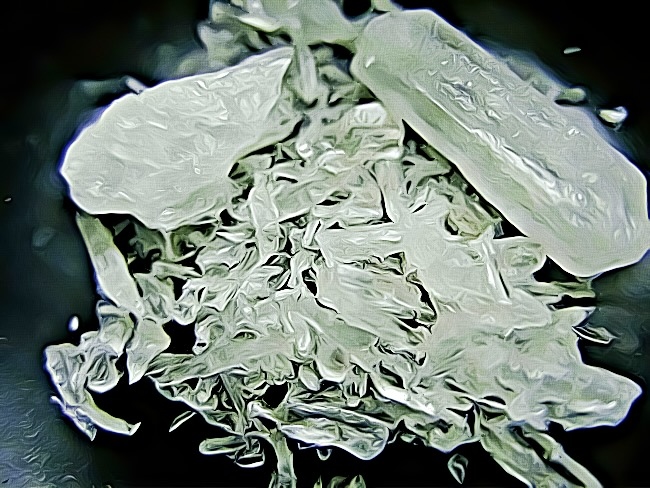Methamphetamine, often referred to as meth, is a highly addictive drug that can produce a quick, intense high. How long the high lasts depends on several factors, including the dose, the drug taken, and the individual’s physiology.
Moreover, Methamphetamine and other methamphetamine-related drugs can cause a range of effects on the body, including psychosis, addiction, and death.
In this article, learn more about Methamphetamine, its adverse effects, and where to find local recovery support, such as a Colorado addiction treatment center.
How Long Does Meth High Last?
Numerous variables will affect how long the high from meth last. A typical meth-induced high might last anywhere from a couple of hours and more than six hours before its effects start to fade. A high from crystal meth can persist for many hours or, in some situations, even up to three days because it is the purest form of the drug.
What Is Being High on Meth Like?
Meth, as opposed to cocaine, causes a protracted euphoric mood that unfolds over time.
Rush Phase
The initial dopamine surge that amphetamine offers is strong and almost instantaneous. People experience a surge of energy that builds as their hearts start to beat faster, peaking at a high with quick speech and confidence. About 14 hours pass during the meth rush period.
High Phase
Sustained high from meth follows the first surge. This high often lasts a few hours but can last up to 15 hours. The tendency to argue to prove a point may come from a person’s tendency to feel particularly assertive. They frequently become fixated on one action, such as standing and looking at a flame or an appliance or actively repeating it, such as clicking their fingers or cleaning the room.
Repeat Phase
To prolong the pleasure associated with the methamphetamine high and prevent unpleasant withdrawal consequences, an addict would repeatedly go through the meth rush and high cycle for days. They may hardly eat or sleep during this period. Their physical and mental decline may cause the following stage of the meth-induced high, shutdown or tweaking, to occur.
Shutdown Phase (also known as Tweaking)
After the rush and high pass, people experience psychological problems due to weariness and the inability to get high again from methamphetamine. The user will frequently describe the period following a meth-induced high as a feeling of emptiness, loss, and longing or dwelling in a cloud of peculiar feelings.
Due to their heightened animosity or desire to harm themselves, meth users at this portion of the high are dangerous to both themselves and anyone around them.
Hibernation Phase
When the body reaches its breaking point, it will retreat into a sleep state in an attempt to recuperate somewhat. This period following the meth-induced high typically lasts a few days. Unbathed, hungry, thirsty, and yet worn out from the devastation of the days before, the human emerges.
As withdrawal symptoms develop, a person will ultimately search for a cure to lessen them, and the cycle will continue.

What Is Methamphetamine?
Synthetic drugs like meth are highly addictive and excite users’ central nervous systems. In addition to controlling the mind’s ability to grasp, remember, and maintain general concentration conceptually, this system controls breathing, body temperature, movement, and balance. Meth can be taken orally, intravenously, or both.
Crystal meth is the strongest kind of methamphetamine. Due to the high level of addiction associated with methamphetamine, many users find it challenging to recover without the assistance of qualified methamphetamine addiction therapy.
Chronic drug usage can have adverse psychological and physical effects.
As a result of its quick-hitting effects and bluish tone, which gives it the appearance of stones or shards of crystal, it has acquired street names like:
- Blue
- Crystal
- Glass
- Ice
- Speed
What Is Meth Psychosis?
When experiencing psychosis, it can be challenging to tell what is genuine and what is not. It’s possible that one won’t be able to communicate effectively, that they’ll hold onto ideas that are blatantly false, or that they’ll perceive unreal information.
Meth abuse can result in psychosis. This unsettling symptom raises your chance of consuming meth since it could cause you to behave abnormally. Your freedom, relationships, profession, and maybe even your life might all be in danger.
Symptoms of Meth-Related Psychosis
Despite its terrifying and terrible appearance, methamphetamine psychosis is relatively frequent. When someone believes someone is out to get them, paranoia and hallucinations are classic symptoms of meth psychosis.
- being giddy or jumpy
- speaking quickly
- changing subjects frequently
- making conversations challenging to understand
- expressing very peculiar or unusual viewpoints
- thinking that others are trying to harm you
Additionally, your skin may be itchy and make you feel as though bugs are crawling on you.
Meth is not the only drug that may cause psychosis. Since mental health conditions like schizophrenia can result in psychotic episodes, anybody with a history of psychosis should get a correct diagnosis and treatment.
Meth-related psychosis is a little different from other types of psychotic episodes. Schizophrenia patients may have trouble thinking effectively and changes in attention and visual preferences.
Meth-induced psychosis increases a person’s risk of developing hallucinations, which lead them to perceive things that aren’t there.
Since psychosis separates a person from reality, it is unlikely they will recognize it if they meet it. Instead, one can feel agitated and irritated, wonder why no one believes them, or be highly self-aware.
How Do People Get High on Meth?
There are several ways to make meth. Depending on the method, people can take meth via smoking, snorting, injecting, or taking pills.
What Effects Does Smoking Second-Hand Meth Have?
Researchers are unclear if breathing in secondhand methamphetamine smoking would make you feel euphoric, but it may cause you to test positive for the drug. More research in the field is required to confirm the particulars of this problem.
How Much Time Does Meth Remain In Your System?
Meth has a 9-to-24-hour half-life. As a result, for a person’s blood methamphetamine content to drop by half, it takes between 9 and 24 hours.
What Remains in Your System After Using Meth?
Urine typically contains methamphetamine even 72 hours after the last dosage. Both drugs are likely to appear in a drug test because methamphetamine may be changed into amphetamine. The typical detection window for stimulants from the amphetamine family in urine is three to five days following the previous dose.
This period can be prolonged in heavy, chronic users; it may be detectable in the urine for up to a week.
To identify someone using methamphetamine, tests on the blood, oral secretions, and hair may all be done. Blood and verbal fluid tests can be more precise and efficient for establishing recent intake, despite having shorter detection windows than urine testing. Depending on the type of hair test utilized, methamphetamine can stay in a person’s system for up to 90 days after their last usage. It is typically not used for clinical or occupational testing and is more appropriate for forensic or research study testing.
Conclusion
Meth addiction can be a difficult thing to overcome. However, it is possible to recover from methamphetamine addiction with the right help. Many resources, such as local addiction treatment, are available to those struggling with meth addiction, and with the proper support, recovery is possible.
Source: https://nida.nih.gov/publications/drugfacts/methamphetamine

